Picture this: you wake up one fine morning to discover that your long-lost great aunt left you a hefty financial surprise—a legacy that could power your wildest dreams, fund your next epic adventure, or simply boost your investment portfolio. But instead of a trust fund that magically multiplies overnight, you’ve been handed an Inheritance IRA. Welcome to the quirky, eye-opening world of Inheritance IRAs—where benefits, fees, and tax strategies collide in a way that’s as fascinating as binge-watching your favorite series on a lazy Sunday afternoon.
Inheritance IRA: Benefits, Fees & Everything You Need to Know Table of Contents
Inheritance IRA 101: The Basics and Beyond
Benefits of an Inheritance IRA: More Than Just a Windfall
Understanding the Fees: What Are You Really Paying For?
Tax Considerations and Maximizing Your Inheritance IRA
Common Mistakes and Pitfalls: How to Dodge Financial Fumbles
Step-by-Step Guide: How to Transform Your Inheritance IRA into a Financial Ally
Inheritance IRA vs. Traditional IRA: What Sets Them Apart?
Resources and Community Support: Your Next Steps
Your Journey with the Inheritance IRA: Embrace Your Financial Future
Inheritance IRA 101: The Basics and Beyond
If you’re new to the term “Inheritance IRA,” think of it as a financial legacy with a twist. Unlike your standard IRA that you diligently set aside for your future self, an Inheritance IRA is what happens when you inherit a retirement account from someone who’s passed on their savings wisdom. It’s not just a pot of cash; it’s a sophisticated account with special rules designed by the tax gurus to help you manage an unexpected windfall.
When you inherit an IRA, the rules shift faster than a TikTok trend. You might wonder: “Do I pay taxes on it all at once? What are the deadlines? Is there a secret handshake involved?” Rest assured, while it isn’t as mysterious as deciphering the latest cryptocurrency meme, it does require some savvy moves. An Inheritance IRA can be set up as a Traditional or Roth account, depending on the original account type, and comes with specific rules regarding distributions, required minimum distributions (RMDs), and taxes.
For millennials and Gen Zers navigating the labyrinth of financial jargon, the Inheritance IRA might seem like that unexpected game level where the challenges are steep but the rewards—if managed correctly—can propel you towards serious financial growth. And yes, while it might sound as intimidating as a pop quiz on tax law, understanding its nuances could mean the difference between nimble wealth-building and a financial faux pas.
In essence, an Inheritance IRA offers you the opportunity to continue the growth of the funds you’ve received. With careful planning, it can serve as either a tax-efficient income source in retirement or a launchpad for further investments. The key lies in grasping its mechanics early on, so you can make informed decisions that suit your lifestyle and financial goals.
Benefits of an Inheritance IRA: More Than Just a Windfall
Let’s break down the perks of having an Inheritance IRA. Imagine unlocking a treasure chest that not only holds assets but also comes with a unique set of benefits designed to help you march confidently toward financial independence. Here’s what makes an Inheritance IRA especially appealing:
Tax-Deferred Growth
One of the primary benefits is that your inherited funds continue to grow tax-deferred. This means that while the taxman is always lurking in the background, your investments can appreciate without immediate taxation—giving you the luxury of compound growth. Think of it as having a financial garden where your money grows and multiplies, minus the pesky weeds of taxation, at least until you decide to pluck the fruits.
Flexibility in Distributions
Unlike many financial windfalls that come with rigid strings attached, an Inheritance IRA offers a relatively flexible approach to distributions. Depending on the type of IRA inherited and your relationship to the decedent, you may have options regarding the timing and amount of withdrawals. This flexibility can be a game-changer, allowing you to strategically manage your tax burden and cash flow according to your unique financial roadmap.
Continued Investment Opportunities
Receiving an Inheritance IRA isn’t akin to winning the lottery and then watching the funds evaporate; it’s an invitation to participate in the market with a head start. Whether you choose conservative investments or are willing to ride the rollercoaster of growth stocks, you get to decide how to best allocate the funds. This cultivates an environment where your financial future isn’t relegated to a static nest egg but can evolve dynamically over time.
Legacy Preservation
Inheriting an IRA is a testament to the legacy of the benefactor, and managing it well can honor their financial wisdom. By carefully strategizing the use and growth of the Inheritance IRA, you’re not just benefiting in the present—you’re also preserving and potentially expanding the legacy left for future generations. It’s a bit like planting a tree whose shadow you might enjoy years later.
These benefits underscore why an Inheritance IRA, despite its complexities, offers a unique opportunity for financial empowerment. With tax advantages, flexible distribution rules, and the potential for continued growth, it stands as a valuable asset for anyone looking to secure their financial future while honoring the past.
Understanding the Fees: What Are You Really Paying For?
Fees in the realm of Inheritance IRAs can feel as enigmatic as the fine print in a dating profile—promising but often confusing. However, peeling back the layers of fee structure is crucial to ensuring that your newly inherited asset works as hard as you do. Let’s dive into the types of fees you might encounter and how they can impact your balance.
Administrative Fees
Administrative fees are the costs incurred by the financial institution for managing your account. They can be compared to a subscription service—you pay a small fee each month (or year) for a service that keeps your investments performing optimally. Typically, these fees cover record-keeping, customer support, and other administrative tasks. While they might seem like a nuisance, a well-managed administrative fee ensures your account is in good hands.
Management and Investment Fees
If you decide to invest in mutual funds, ETFs, or managed portfolios within your Inheritance IRA, you’ll likely face management fees. These fees compensate investment managers for their expertise, akin to paying for a barista who not only makes your coffee but also adds a dash of personalized flair. Keeping an eye on these fees is vital, as even a small percentage can compound over time, potentially eating into your returns.
Custodial Fees
Custodial fees are charged for the safekeeping and administration of your IRA assets. Think of it as paying rent for a secure storage unit where your financial treasures are protected. While these fees are generally modest, they’re an essential part of maintaining the integrity and security of your account.
Transaction Fees
Transaction fees come into play when you buy or sell investments within the IRA. Whether you’re trading stocks or adjusting your portfolio’s composition, these fees are the price for each move you make in the vast game of financial chess. It’s a good idea to factor in these costs when strategizing your trades, as they can accumulate over time if you’re an active investor.
In summary, while fees might seem like unavoidable nuisances, they are often the price of high-quality account management and investment opportunities. The trick is to understand each fee’s purpose and weigh it against the benefits you receive. With careful planning, you can minimize these costs and ensure that more of your money is working for you—and not just lining the pockets of administrators.
Tax Considerations and Maximizing Your Inheritance IRA
Taxes: the uninvited guest at every financial party. With an Inheritance IRA, understanding the tax implications isn’t just important—it’s absolutely critical. But don’t worry, we’re here to demystify these tax tidbits with a dash of humor and plenty of clarity.
Required Minimum Distributions (RMDs)
One of the trickiest aspects of managing an Inheritance IRA is the rule of Required Minimum Distributions (RMDs). Depending on when the original owner passed away and your own personal timeline, you might be required to take minimum withdrawals annually. Imagine RMDs as the financial version of a subscription box—if you don’t open it (i.e., withdraw the funds), you could face penalties. For non-spousal beneficiaries, recent changes in the law have actually altered the timeline for these distributions, so it pays (pun intended) to stay current on the rules.
Tax Deferred vs. Taxable Distributions
The beauty of a tax-deferred growth strategy is that you won’t owe taxes on the gains until you withdraw the money. However, this doesn’t mean you can ignore taxes forever. When distributions are taken, they’re generally taxed as ordinary income. This means that if you’re in a higher tax bracket when you retire (or if you time your withdrawals poorly), you might end up paying more than expected. Planning ahead and possibly consulting with a tax advisor can help you align your withdrawals to minimize tax impacts.
Inherited Roth IRAs vs. Traditional Inherited IRAs
If you’ve inherited a Roth IRA, congratulations—you’re in luck from a tax perspective. With inherited Roth IRAs, you’re generally not forced to pay taxes on withdrawals since the original contributions were made post-tax. However, the same rules about RMDs apply, albeit with a more favorable tax outcome. On the other hand, Traditional Inherited IRAs require you to pay taxes upon distribution, so strategizing withdrawals becomes all the more crucial.
Strategic Planning for Tax Efficiency
The overall goal when managing your Inheritance IRA is to maximize your funds while keeping your tax bill in check. Some strategies include:
- Timing Your Withdrawals: Plan withdrawals for years when your income is lower to benefit from lower tax rates.
- Consolidating Distributions: Sometimes it may be advantageous to consolidate smaller distributions into a larger, strategically timed withdrawal to manage your tax bracket.
- Diversifying Investments: Spread your funds across different asset classes to balance growth and risk, potentially mitigating the tax impacts of volatile market movements.
Keeping abreast of the latest tax laws and financial regulations is essential in ensuring that your Inheritance IRA continues to work for you, rather than against you. In this ever-evolving landscape, a proactive approach in consultation with financial advisors and tax experts can help you harness every possible tax advantage.
Common Mistakes and Pitfalls: How to Dodge Financial Fumbles
Let’s be real: even the most financially savvy among us can sometimes slip up. Whether it’s mismanaging distributions or falling prey to hidden fees, there are a few common pitfalls when it comes to handling an Inheritance IRA. Avoid these mistakes, and you’ll be well on your way to turning that legacy into long-term wealth.
Ignoring the RMD Deadline
One of the most fatal errors is failing to adhere to the RMD deadlines. Skipping or delaying required withdrawals can lead to severe penalties, potentially wiping out a significant portion of your inheritance in fines. Set reminders, mark your calendar, and consider automating reminders—your financial future will thank you.
Poor Investment Choices
Not all that glitters is gold, and the allure of high-risk, high-reward investments can be tempting. However, investing your inheritance in overly speculative ventures without proper research can be a recipe for disaster. Striking a balance between conservative investments and growth-oriented options is key to preserving your inheritance.
Misunderstanding Tax Implications
Many detractors of Inheritance IRAs get tripped up by not fully understanding the tax implications involved. Whether it’s the difference between taxable and non-taxable distributions or the nuances of a Roth vs. Traditional IRA inheritance, misinformation can lead to costly mistakes. Staying informed and consulting with tax professionals can help you navigate these murky waters.
Overlooking Fees
As discussed earlier, fees can quietly erode your returns if not carefully managed. Whether it’s administrative, management, or transaction fees, understanding where your money is going is crucial. Always read the fine print and ask questions if you’re unsure about any fee structure.
Dodging these pitfalls requires diligence, research, and sometimes a bit of expert guidance. By arming yourself with knowledge and staying proactive in your financial management, you’ll be better positioned to turn your Inheritance IRA into a thriving part of your long-term wealth strategy.
Step-by-Step Guide: How to Transform Your Inheritance IRA into a Financial Ally
So, you’ve got your hands on an Inheritance IRA—what’s next? Transforming this financial asset into a dynamic part of your portfolio is like assembling an epic playlist: it needs a strategy, the right elements, and, yes, a little bit of flair. Here’s your step-by-step guide:
Step 1: Assess Your Newfound Asset
Begin by understanding what you’ve inherited. Is it a Traditional IRA or a Roth IRA? What’s the current balance? Familiarize yourself with any specific rules that apply—like RMD deadlines or particular distribution options. This initial assessment lays the groundwork for your next moves.
Step 2: Consult a Financial Advisor
Even if you’re the reigning champ of personal finance, consulting with a financial advisor can be a game-changer. They can help you dissect the details, clarify the tax implications, and craft a plan that fits your goals. Think of it as having a financial GPS to steer you away from potential roadblocks.
Step 3: Define Your Financial Goals
What do you envision for your future? Do you need a steady stream of income for retirement, or are you eyeing aggressive growth for future investments? Clarifying your objectives will determine how you manage the distributions and reinvestment strategies.
Step 4: Develop a Tax-Efficient Withdrawal Plan
Based on your financial and tax situation, work out a plan for the required minimum distributions. Timing is everything here. Map out when and how much you’ll withdraw each year, keeping an eye on potential tax implications and ensuring you don’t inadvertently move into a higher tax bracket.
Step 5: Choose Your Investments Wisely
With distributions sorted, the next task is to determine how to invest the inherited funds. Whether you lean towards mutual funds, ETFs, or a mix of stocks and bonds, ensure that your investment choices align with your overall risk tolerance and long-term financial plan.
Step 6: Monitor and Adjust Regularly
The financial landscape isn’t static, and neither should your strategy be. Regularly review your portfolio, keep tabs on market changes, and adjust your plan as needed. With the right approach, your Inheritance IRA can evolve along with your financial goals.
Each step is part of a larger journey toward financial empowerment. With diligence, precise planning, and a dash of courage, you can transform an inherited asset into a cornerstone of your wealth-building strategy.
Inheritance IRA vs. Traditional IRA: What Sets Them Apart?
At first glance, an Inheritance IRA might seem like just another variant of your standard Traditional IRA. However, the devil is in the details—and these differences can significantly impact your approach to managing the account.
The Key Differences
A Traditional IRA is typically funded by your own contributions, offering tax-deductible benefits and tax-deferred growth through professional contributions over the years. In contrast, an Inheritance IRA is what you receive from someone else’s legacy. Although the investment choices may be similar, the rules governing distributions, especially RMDs, are quite different.
Distribution Rules and Timelines
For a Traditional IRA, you can generally delay withdrawals until you reach a certain age. With an Inheritance IRA, the clock starts ticking the moment the original account holder passes away. The distribution timeline changes depending on whether you’re a spouse, non-spouse, or whether the death occurred before or after the required beginning date.
Tax Implications
The tax treatment of distributions is a major factor in both accounts. Traditional IRAs offer tax-deferred growth, meaning you pay taxes upon withdrawal, often during your retirement years. In contrast, with an inherited Roth IRA, qualified distributions are typically tax-free, offering a sweet deal that can significantly benefit your long-term financial planning.
Understanding these differences is crucial in crafting a strategy that leverages the strengths of your inherited asset. Whether you view it as a continuation of your own investments or a separate source of income, clarity on these distinctions helps prevent costly missteps.
Real Stories: Millennials & Gen Z Navigating Their Inheritance IRA
It’s one thing to talk about the nuts and bolts of an Inheritance IRA—it’s another to see how real people are putting these strategies into practice. Millennials and Gen Zers, in particular, are rewriting the rulebook on financial planning. Here are a few tales that might just sound a bit like your own story:
A Second Chance at Financial Freedom
Meet Alex, a 32-year-old digital nomad who inherited his grandfather’s IRA. Initially overwhelmed by the prospect of managing what he deemed “old money,” Alex decided to leverage his inherited asset by consulting a financial advisor and investing in socially responsible funds. Today, he’s not just funding his adventurous lifestyle—he’s building a diversified portfolio that continuously grows, proving that even unexpected inheritances can be a catalyst for innovation in your financial strategy.
The Cautious Approach That Paid Off
Then there’s Jamie, a 28-year-old creative professional who inherited an IRA from an estranged aunt. Instead of panicking, Jamie took the time to learn about the tax implications and invested in a balanced mix of low-fee index funds and ETFs. With regular check-ins and minor course adjustments, Jamie’s not only avoided hefty fees but has also set a solid foundation for long-term financial stability. It turns out that patience and a willingness to learn can transform an inheritance from a source of stress into a stepping stone for future success.
A Wake-Up Call for Financial Literacy
Then we have Morgan, a savvy Gen Zer who realized that his unexpected Inheritance IRA wasn’t just a windfall—it was a wake-up call to embracing financial literacy. Through online courses, virtual communities, and a dedicated interest in fintech, Morgan’s journey is a testament to turning a daunting financial responsibility into an opportunity for personal growth and smart money management.
These stories highlight that an Inheritance IRA is not a one-size-fits-all financial artifact. It’s a living, breathing asset that, when managed with care and creativity, can help shape a future filled with financial empowerment and independence.
Resources and Community Support: Your Next Steps
So, you’re ready to dive deeper into the world of Inheritance IRAs? There’s a wealth of resources and vibrant communities out there eager to help you navigate every twist and turn of your financial journey. From online forums and engaging podcasts to webinars hosted by top financial experts, you can find the support you need to make informed decisions.
Consider joining financial literacy groups on social media platforms, where millennials and Gen Zers share tips, success stories, and even some hilarious anecdotes about their financial misadventures. Look for reputable websites, government publications, and trusted financial news outlets that offer insights on the latest tax laws and investment trends.
Additionally, don’t underestimate the value of one-on-one consultations. Many financial advisors now offer virtual sessions tailored for younger investors who are navigating the complexities of inheritance accounts for the first time. Whether you prefer a structured program or an informal discussion over your favorite cup of coffee, there’s a resource out there to suit your style.
Taking the next steps might involve:
- Subscribing to newsletters and blogs focused on personal finance and inheritance planning.
- Attending virtual workshops and webinars that break down the nuances of Inheritance IRAs.
- Engaging with online communities where you can ask questions and get real-time advice from experienced investors.
- Utilizing financial planning tools and apps that help you monitor your investments and tax obligations.
Remember, financial literacy is a journey—not a destination. Every bit of knowledge you accumulate helps you take control of your financial destiny, ensuring that your Inheritance IRA becomes a cornerstone of a well-rounded, future-proof investment strategy.
Your Journey with the Inheritance IRA: Embrace Your Financial Future
Standing at the crossroads of legacy and opportunity, your Inheritance IRA is far more than a passive asset. It’s an active tool in your financial arsenal—one that requires strategic planning, awareness of fees and taxes, and a genuine desire to learn and grow. Every dollar you inherit carries not just monetary value, but also the promise of a secure future if nurtured wisely.
As you embark on this journey, embrace the notion that every decision, whether it’s choosing a low-fee investment or timing a distribution strategically, contributes to the larger story of your financial independence. Like assembling the perfect playlist, your investment decisions should reflect your unique tastes, ambitions, and the lessons learned from those who came before you.
The path might seem daunting at first, with its maze of IRS rules, withdrawal quotas, and evolving tax legislation, but it’s also filled with opportunity—much like the first swipe on your favorite dating app. With each informed move, you’re not just managing an inheritance; you’re actively rewriting your financial future, transforming legacy into lasting wealth. Learn, laugh, and grow along the way, and before you know it, you’ll look back and marvel at how far you’ve come.
Your Inheritance IRA is more than a safety net—it’s a launchpad to greater financial freedom, a reminder that what you inherit can be the foundation for a legacy of your own making. Embrace the adventure, trust in your ability to learn and adapt, and let this financial tool elevate your life in ways you never thought possible.
Inheritance IRA FAQs: Your Burning Questions Answered
Here are some frequently asked questions to clear up any lingering doubts you might have about your Inheritance IRA. These responses aim to provide clarity on topics that often cause confusion, ensuring you have a smooth road ahead in your financial journey.
1. What exactly is an Inheritance IRA?
An Inheritance IRA is a retirement account that you acquire after inheriting funds from someone else’s IRA. It allows you to continue the tax-deferred growth of those funds, although you must adhere to specific distribution rules and tax guidelines.
2. How do required minimum distributions (RMDs) work for an Inheritance IRA?
RMDs are mandatory withdrawals that you must start taking within a prescribed time frame, depending on your relationship to the deceased and the type of IRA inherited. Failing to meet the RMD deadlines can result in hefty penalties.
3. Is there a difference between inheriting a Traditional IRA and a Roth IRA?
Yes. Inherited Roth IRAs generally offer tax-free withdrawals provided certain conditions are met, while Traditional Inherited IRAs require you to pay taxes on distributions at your ordinary income tax rate.
4. What fees can I expect with an Inheritance IRA?
Common fees include administrative fees, investment management fees, custodial fees, and transaction fees. It’s essential to understand these costs, as they can impact your overall returns.
5. Can I roll over an Inheritance IRA into my own IRA?
Generally, non-spousal beneficiaries are required to keep the inherited IRA as a separate account, while spouses might have options to treat it as their own. It’s best to consult a financial advisor to understand your specific circumstances.
6. How can I minimize taxes when taking distributions from my Inheritance IRA?
Strategic planning is key—timing your withdrawals to align with lower-income years, consolidating distributions, and opting for tax-efficient investments can help reduce the tax bite.
7. What investment options are available within an Inheritance IRA?
You can typically choose from a wide range of investments, including stocks, bonds, mutual funds, and ETFs. The key is to select options that align with your financial goals while managing risk and fees.
8. Are there any penalties for missing RMD deadlines?
Yes, missing an RMD can result in severe penalties—up to 50% of the amount that should have been withdrawn. Staying on top of these deadlines is critical.
9. How do I know if an Inheritance IRA is right for me?
If you’ve inherited a retirement account, it is an Inheritance IRA by default. The key is to understand the rules and determine if its benefits align with your long-term financial strategy. A consultation with a financial advisor is highly recommended.
10. Can I manage my Inheritance IRA online?
Absolutely! Most financial institutions offer robust online platforms and mobile apps, allowing you to monitor, invest, and manage your account with ease from anywhere.
Your Financial Future: Step into a Legacy of Empowerment
Navigating the complexities of an Inheritance IRA might seem as challenging as tracking your favorite influencer’s ever-changing TikTok trends, but remember: every challenge is an opportunity to level up your financial game. By understanding the benefits, strategically managing fees, and planning for tax efficiency, you’re not just handling an inherited asset—you’re harnessing it to build a robust financial future.
Embrace your new reality with a mix of caution, creativity, and a willingness to ask questions. The world of inherited wealth is dynamic, and with the right strategies in place, you can transform potential pitfalls into platforms for success. Whether you’re in the early stages of career-building or setting up a legacy for future generations, your journey with an Inheritance IRA is a powerful step toward financial empowerment.
So go ahead—dive in, explore, and leverage the advantages of your inherited asset. Your financial story is waiting to be written, and with an Inheritance IRA as your secret weapon, you’re well on your way to turning legacy into lasting wealth. Enjoy every step of the journey, and remember: being financially savvy never goes out of style.













